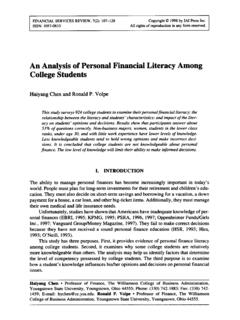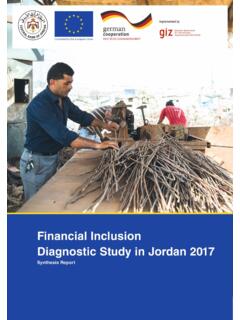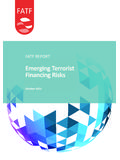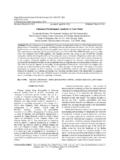Transcription of FINANCING OF THE TERRORIST ORGANISATION …
1 FATF REPORTF inancing of the TERRORIST ORGANISATION Islamic State in Iraq and the Levant (ISIL)February 2015 financial ACTION TASK FORCE The financial Action Task Force (FATF) is an independent inter-governmental body that develops and promotes policies to protect the global financial system against money laundering, TERRORIST FINANCING and the FINANCING of proliferation of weapons of mass destruction. The FATF Recommendations are recognised as the global anti-money laundering (AML) and counter- TERRORIST FINANCING (CFT) standard. For more information about the FATF, please visit the website: This document and/or any map included herein are without prejudice to the status of or sovereignty over any territory, to the delimitation of international frontiers and bounderies and to the name of any territory, city or area. Citing reference: FATF (2015), FINANCING of the TERRORIST ORGANISATION Islamic State in Iraq and the Levant (ISIL), FATF, 2015 FATF/OECD.
2 All rights reserved. No reproduction or translation of this publication may be made without prior written permission. Applications for such permission, for all or part of this publication, should be made to the FATF Secretariat, 2 rue Andr Pascal 75775 Paris Cedex 16, France (fax: +33 1 44 30 61 37 or e-mail: Photocredits coverphoto: Thinkstockphotos FINANCING OF THE TERRORIST ORGANISATION ISLAMIC STATE IN IRAQ AND THE LEVANT (ISIL) 2015 1 CONTENTS ACRONYMS .. 3 EXECUTIVE SUMMARY .. 5 I. INTRODUCTION .. 9 Purpose, scope and objectives .. 9 Methodology, participants and data utilized .. 9 Nature and evolution of the TERRORIST threat .. 10 FATF, United Nations and other Statements on ISIL .. 11 II. SOURCES OF FUNDING .. 12 1. Illicit Proceeds from occupation of territory including extortion and theft .. 12 Bank Looting, Extortion and Human Trafficking .. 12 Control of Oil and Gas 13 Extorting Agriculture.)
3 15 Other Resource Extraction and Production 16 Cultural Artefacts .. 16 Illicit Taxation of Goods and Cash that Transit Territory where ISIL Operates .. 17 Salary Payments to Iraqi Government Employees .. 17 2. Kidnapping for 18 3. Donations including by or through non-profit organisations (NPOs) .. 18 4. Material support to include foreign TERRORIST fighters .. 20 5. Fundraising through modern communication networks .. 24 III. MOVEMENT AND USE OF FUNDS AND OTHER ASSETS .. 27 1. financial institutions .. 27 financial Institutions in Iraq .. 27 financial Institutions in Syria .. 28 2. Money and Value Transfer Services (MVTS) .. 28 3. Smuggling (cash, gold or other valuable items) .. 29 4. financial management and expenditure of funds and assets .. 29 IV. ISSUES FOR FURTHER CONSIDERATION AND COOPERATION .. 32 1. Disrupting financial flows .. 32 International Cooperation.
4 33 2. Depriving ISIL from its 33 Targeted FINANCING 33 Oil Smuggling and Sales .. 34 Kidnapping for Ransom .. 35 Fundraising through modern communication networks .. 36 Material Support and FTFs .. 36 3. Preventing ISIL from Abusing Relevant Sectors .. 36 financial Sector .. 36 FINANCING OF THE TERRORIST ORGANISATION ISLAMIC STATE IN IRAQ AND THE LEVANT (ISIL) 2 2015 Cultural Artefacts .. 37 4. Steps to Limit Humanitarian Consequences for Population .. 38 V. CONCLUSION .. 40 BIBLIOGRAPHY .. 41 FINANCING OF THE TERRORIST ORGANISATION ISLAMIC STATE IN IRAQ AND THE LEVANT (ISIL) 2015 3 ACRONYMS ABM Ansar Bayt al-Maqdis AML/CFT Anti-Money Laundering / Countering the FINANCING of Terrorism ANF Al -Nusrah Front AQ Al -Qaida AQI Al -Qaida in Iraq EFTs Electronic Funds Transfers FATF financial Action Task Force FIU financial intelligence units FTFs Foreign TERRORIST Fighters IRS-CI IRS-Criminal Investigation ISIL Islamic State in Iraq and the Levant KFR Kidnapping for Ransom KRG Kurdistan Regional Government MVTS Money or value transfer services NPO Non-Profit ORGANISATION R.
5 Recommendation TF TERRORIST FINANCING UN United Nations UNODC United Nations Office on Drugs and Crime UNSCR United Nations Security Council Resolution USD US Dollars FINANCING OF THE TERRORIST ORGANISATION ISLAMIC STATE IN IRAQ AND THE LEVANT (ISIL) 2015 5 EXECUTIVE SUMMARY The mandate of the financial Action Task Force (FATF) was expanded in 2001 to address the funding of terrorists acts and TERRORIST organisations. Since that time, combatting TERRORIST FINANCING (TF) has been a very significant challenge. Important work was done in 2008 to identify a wide variety of TF methods terrorists use to raise, move and use funds. That study addressed the TERRORIST requirement for funds to include direct costs associated with specific operations and broader organisational costs to maintain infrastructure and promote ideology for the TERRORIST ORGANISATION .
6 Given the rapid development of the TERRORIST ORGANISATION Islamic State in Iraq and the Levant (ISIL), there is a need to understand those funding requirements and associated TF risk. This study represents a snapshot of the revenue sources and financial activities of ISIL been identified to date. However, gaps remain and more work is needed to develop the full picture of ISIL s financial activities and to identify the most effective countermeasures to prevent ISIL from using accumulated funds and disrupting sources of funding. ISIL FINANCING is a constantly changing picture and a very difficult and complicated area to address given the operational situation on the ground. It should be emphasized that terrorism and those who support terrorism can never be associated with any religion, nationality, civilisation or ethnic group.
7 ISIL represents a new form of TERRORIST ORGANISATION where funding is central and critical to its activities. This report identifies ISIL s primary sources of revenue which are mainly derived from illicit proceeds from its occupation of territory. These sources include bank looting and extortion, control of oil fields and refineries and robbery of economic assets. Other sources include the donors who abuse Non-Profit Organisations (NPOs), Kidnapping for Ransom (KFR) and cash smuggling (areas where FATF has conducted in-depth research), to new and emerging typologies which have not yet been addressed by the FATF, such as the extortion of goods and cash transiting territory where ISIL operates and grass-root funding strategies. A number of unique and diverse case studies have been provided by countries which describe how ISIL obtains funding and economic support as well as describing mechanisms to utilize these funds.
8 The need for vast funds to meet organisational and governance requirements represents a vulnerability to ISIL s infrastructure. In order to maintain its financial management and expenditures in areas where it operates, ISIL must be able to seize additional territory in order to exploit resources. It is unclear if ISIL s revenue collection through the illicit proceeds it earns from occupation of territory, including extortion and theft, will be sustainable over time. Cutting off these vast revenue streams is both a challenge and opportunity for the global community to defeat this TERRORIST ORGANISATION . While insight into ISIL s oil-related activities is limited, this report provides a snapshot of ISIL s control of gas and oil reservoirs. While this revenue stream was significant after ISIL s initial control of numerous oil fields, their ability to efficiently extract oil, refine it and sell petroleum products have significantly diminished ISIL s earnings.
9 This is due to coalition1 air strikes, ISIL s 1 The Global Coalition to Counter ISIL ( the Coalition ) is comprised so far of more than 60 partners that have committed themselves to the goals of eliminating the threat posed by ISIL and have already contributed FINANCING OF THE TERRORIST ORGANISATION ISLAMIC STATE IN IRAQ AND THE LEVANT (ISIL) 6 2015 need for refined crude and declining oil prices. There have been efforts to suppress the sale of ISIL oil and oil products on regional markets, such as enhanced counter smuggling efforts of the Turkish authorities in the past two years, as well as recent steps taken by the Kurdistan Regional Government (KRG) and Iraqi Government authorities to seize suspected ISIL-related shipments of oil and oil products. This has reduced oil s importance relative to other sources of revenue.
10 There is still a need to better identify the origin, middlemen, buyers, carriers, traders and routes through which oil produced in ISIL-held territory is trafficked. This report provides limited insight into the role of financial institutions and Money and Value Transfer Services (MVTS) in ISIL-h eld territory as well as the role of the larger international financial sector. However, a significant portion of the data related to this subject is of a sensitive nature and could not be included in this public report. There is a risk that MVTS companies in ISIL-held territory continue to maintain connections to regional counterparts through which ISIL could conduct funds transfers. At the same time, both the Iraqi government and many major global financial institutions have taken steps to prevent banks in ISIL-held territory from accessing the international financial system.















